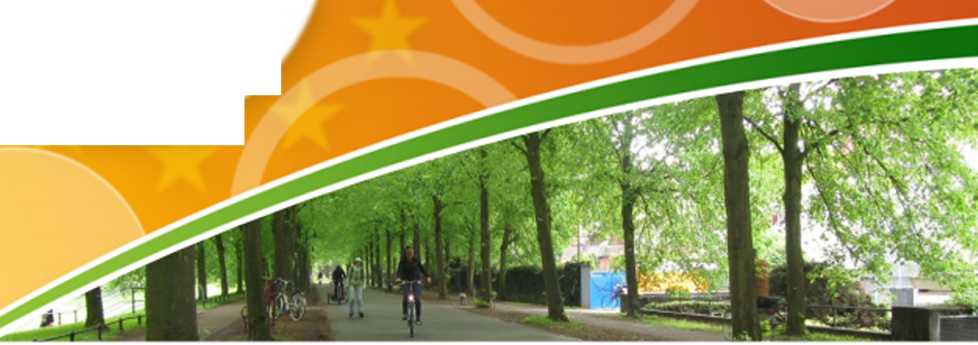9220598005

CMbii^
Central MeetBikel
Fact Sheet H-06 - Rural Cycling (daily and leisure routes)
Necessity of rural cycle facilities
Cyde connectioos through green or mral areas should be induded m the planning of a bicycle network (see Fact Sheet H-01). Consideration should be given to the type of network (national, regional or local) and the importance for bicycle touhsm. However cycling facilities should always be provided when cyding-specific trip attractors and trip generators are present or the distance between built-up areas is less than 10 km.
The choice of cycle facility is largely dependent on the design class of the accompanying Street. The main factors to be considered when selecting facility type are the same as those discussed in Fact Sheet H-02 - Cycling Facilities on the Road:
• volume and speed of motor vehicle traffic.
• volume of heavy goods vehic-les (HGV) and
• bicyde traffic volumes Similarly. other considerations indu-
de: presence of pupils or other vulne-rable users. blind curves and Street gradients
An additional consideration for rural cycle facilities is the purpose of a rou-te. Routes that are important for leisure cyclists are morę likely to be along cycle facilities independent of any Street alignment due to the recreational va-lue of the surroundmg landscape (e.g.
along rivers or through naturę preser-ves). Routes for daily cycling. however, should provide direct connections and are traditionally. in rural areas. parallel to roads. Direct. stand-alone connections can make daily cycling morę at-tractive
Types of rural cycle facilities
Allowing cydists to ride in mixed traffic on the carriageway is only recommen-ded for rural roads with a maximum daily motor vehicle volume of 4000 ve-hicles per 24 hours (veh/24h) and motor vehicle speeds not exceedmg 70 km/h. It is also particularly important to consider the width of the carriageway. Narrow carnageways below 6 m ensure that drivers stay behmd cydists in case of oncmoing traffic before over-taking. Here. Iower speed limits can be considered. Though paved shoulders on the carnageway can be suitable for riding on. they do not sufficiently meet the safety needs of cydists. Current pilot projects in Germany are testing the use of advisory lanes on rural roads (see right).
In all other cases cycle traffic should be provided infrastructure separated from the carnageway. Off-carriageway facilities can be divided into two cate-gories: cycle paths parallel to the carriageway and stand-alone greenways or multi-purpose recreational paths.
Cycle paths running parallel to the carriageway are generally built on one side of the carriageway but for two-way cycle traffic. Depending on pedestrian and cydist vdumes. it may be advisa-ble to plan infrastructure for integrated use under specific design standards.
Providing cycle paths on both sides of the carnageway can increase access to and connectivity between destina-tions by eliminating the need to cross the road. These can accommodate two-way cycle traffic where appropria-te. Two-way cycle paths on both sides of the road can be useful in certam situ-ations. e.g. scattered developments on both sides of the road. access to popular. individual destinations.
Greenways. multi-purpose paths for non-motorised users independent of a road alignment. can be constructed to provide direct connections for bicycle traffic between residential areas. busi-
Advisory lanes on rural roads
Currently. the German Highway Codę does not allow advisory lanes on rural roads due to insufficient ex-perience. A pilot project covering 15 test segments in five German States is expected to provide insight into the effects of advisory lanes on safety. acceptance and behaviour through a before and after analysis. The project runs through the end of September 2014.

Wyszukiwarka
Podobne podstrony:
CMbiiO/ Central MeetBikeFact Sheet H-07 - Traffic Calming MeasuresObjectives of traffic calming Traf
SCMbtice/ Central MeetBike A Fact SheetH-03 - Cycling Facilities off the RoadApplication of cycle
CMbiiO/ Central MeetBikeFact SHEET H-09 - SlGNPOSTING AND Service Infrastructure Service stations Se
SCM<^Fact Sheet H-01 - Developing a Cycling Network and GeneralDesign Standards for Bicycle
ZmbiH Central MeetBike AFact Sheet H-08 - Bicycle Parking Facilities Introduction Ouality bicycle pa
FactSheetT-01 -Incorporate Cycling into City Administration Introduction In Central MeetBike it beca
27. B.96907 CENTRAL bank management / ed. by John Mendzela and Nick Carver ; [with
Michał PTAK zloty) were implemented at a central level under the Operational Programme Infrastructur
Folia Medica Lodziensia, 2011, 38:215-225Estimation of Cyclin E expression and its possible prognost
Calendar for Fair Events 06 April Spring Agricultural and Horticultural Fair AGROMARSZ Wielkopolski
Ladies and Gentlemen! The Ministry of Agriculture and Rural Development has the pleasure to present
CEEJME Central and Eastern European Journal of Management and Economics www.ceejme.eu
Apr 2012-Aug 2012 Child and adolescent psychiatry, Clinic of Adolescent Psychiatry, Central Clinical
06 16 2006 09 55 21 198 Isolation of new actinomycetes strains and taxonomic characterization ■ Vari
więcej podobnych podstron